Nestled on the second floor of the
Shaanxi History Museum, Exhibition Hall No. 3 unfolds in two distinct units. Through an array of meticulously preserved cultural relics, it offers a vivid panorama of Chinese historical evolution from the Sui and Tang Dynasties (581 AD - 907 AD) to the era following the Tang Dynasty (907 AD - 1911 AD).
Unit 1: Flourish of the Tang Dynasty
Sui and Tang Dynasties (581 AD - 907 AD)
The Sui and Tang Dynasties stand as a pivotal epoch in Chinese history, marking a golden age of unparalleled prosperity in economy, culture, military might, and political governance. The capital city of the Tang Dynasty, Chang’an, was a renowned international metropolis at that time. Through the exhibits in this unit, visitors can have a glimpse of the sophisticated lifestyle of the era: people resided in elegant, spacious villas; wore silk garments; dined with gold and silver utensils; and adorned themselves with intricately crafted cosmetics and accessories. The unit also highlights the dynasty’s pluralistic culture, which drew merchants, scholars, and artists from across the globe.
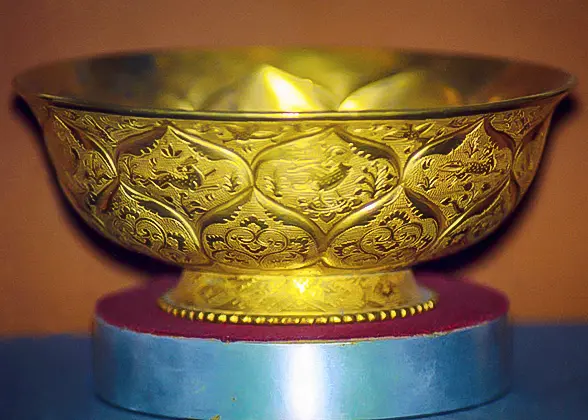 | | Gold Bowls with Mandarin Ducks and Lotus Petals | | 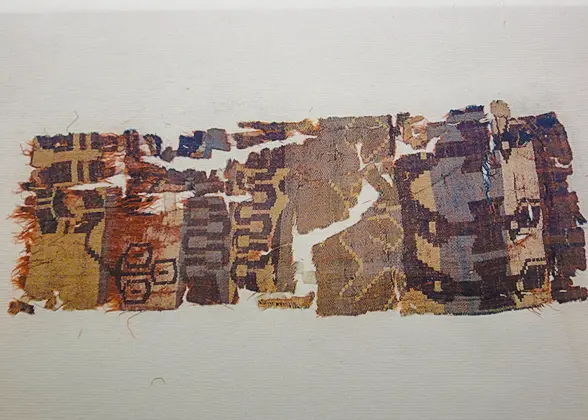 | | Silk Cloth in Tang Dynasty | |
1. Tri-Color Camel Carrying a Musical Band
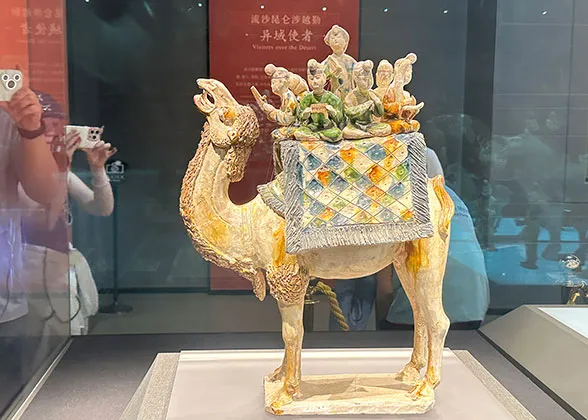 |
| Tri-Color Camel Carrying a Musical Band |
The pottery figurine depicts a camel poised on a rectangular base, its mouth agape as if emitting a neigh. An oval blanket with blue borders adorns its back, while a deep green platform nestles between the two humps, topped with a rectangular blanket embellished with blue fringes and diamond-shaped patterns. The most astonishing part is that there are eight figures on the platform on the camel’s back. Seven male musicians sit in a circular formation, each engrossed in playing a different instrument, their postures diverse and expressive. At the center stands a female singer, resplendent in a long dress with a white base adorned with blue floral motifs, her head slightly raised as if she is singing. Despite carrying the weight of eight people, the small camel’s back appears so harmonious and natural. The artisans have ingeniously combined artistic exaggeration with real life.
2. Tri-Color Courtyard
This architectural model set consists of twelve pieces, including nine houses and two pavilions of various sizes. Arranged along a central axis, the main gate, central hall, rear courtyard, main bedroom, six rooms flanked on both sides, and a rockery pond in the rear courtyard are meticulously laid out from south to north, forming a complete quadrangle courtyard. Initially exclusive to the private gardens of the nobility, this architectural style became widely popular during the Tang Dynasty and came to define the urban landscape of Chang’an City.
3. Painted Pottery Horses
Horses in the Tang Dynasty were widely used for various purposes, including warfare, transportation, and hunting. The Tang people loved horses, and among animal images, horses were depicted most successfully. Artists captured the horses’ expressions, expressing their inner strength through their outer forms, making them full of vitality and lifelike.
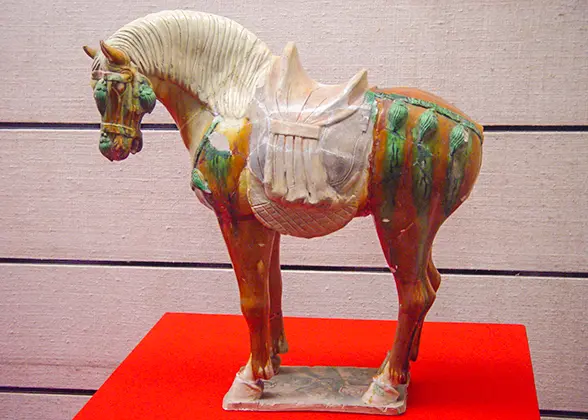 | | Tri-colored Horse | | 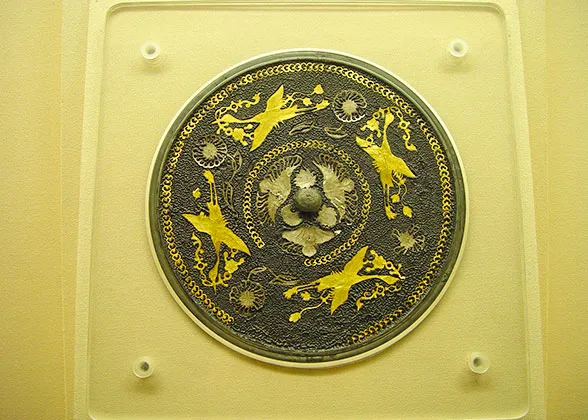 | | Bronze Mirror Decorated with Four Fluttering Birds | |
4. Bronze Mirror Decorated with Four Fluttering Birds Holding Ribbons in Mouth
This is the most exquisite and complete inlaid mirror unearthed in Xi’an from the Tang Dynasty. Its back is adorned with four phoenixes in mid-flight, their wings outstretched gracefully as they clutch ribbons in their beaks. The mirror handle and its surroundings are embellished with golden true love knots, creating a striking contrast against the black base. As a symbol of good fortune and happiness, the phoenix not only enhances the mirror’s aesthetic appeal but also conveys the profound hopes and aspirations of the people for a prosperous life.
 Photos of Relics of Sui & Tang Dynasties
Photos of Relics of Sui & Tang Dynasties Unit 2: Everlasting Glamour
Shaanxi after the Tang Dynasty (907 AD - 1911 AD)
Following the Tang Dynasty’s fall, Xi’an lost its status as imperial capital but remained a key stronghold in the northwest. The cultural relics in this unit illuminate Shaanxi’s unique lifestyle, culture, and religious beliefs during this period, showcasing a shift from Tang-era opulence to rustic simplicity. Moreover, religion was quite prosperous in Shaanxi. Buddhist temples and stupas were scattered throughout the countryside and cities. This unit exhibits many cultural relics related to Buddhism, such as Buddha statues and grottoes.
1. Black-Glazed Bowl with Oil Drops Design
Standing 8.5 cm (3.4 inches) tall, a mouth diameter of 30.2 cm (11.9 inches) and a base diameter of 11.6 cm (4.6 inches), this bowl features a wide mouth and a narrow base, with a grayish-white body fully covered in black glaze. The glazed surface is dotted with metallic-lustrous round spots of varying sizes, resembling oil droplets floating on water. The creation of this distinctive pattern demands meticulous control over the firing temperature, as the crystalline glaze spots only form at precisely 1,100℃. Any deviation from this temperature renders the desired effect unattainable. The fact that this large-sized bowl has survived in such pristine condition is a testament to its rarity and historical significance.
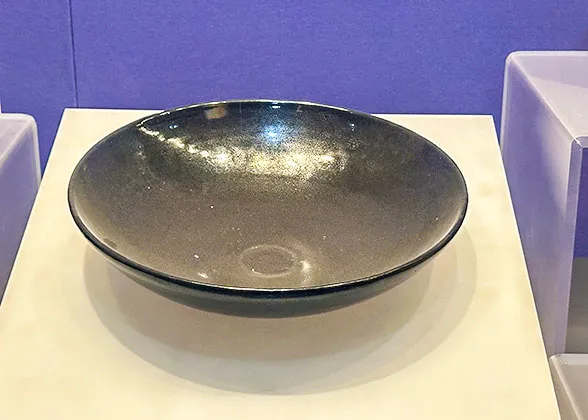 | | Black-Glazed Bowl with Oil Drops Design | | 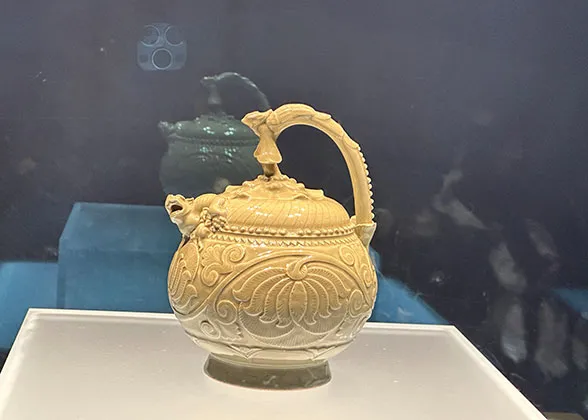 | | Celadon Pot with a Loop Handle | |
2. Celadon Pot with a Loop Handle
This pot is a masterpiece of design, boasting intricate patterns and a unique shape. The handle, crafted in the form of a crouching phoenix, and the spout, which features a reclining lioness and cub, are rendered with remarkable detail. The lid, handle, and body are seamlessly integrated, with a small plum blossom-shaped water inlet at the center of the bottom. To fill the pot, it is inverted, and once full, water flows out of the lioness’s mouth. When righted, water dispenses smoothly from the spout without any leakage from the bottom, a clever application of the principle of communicating vessels.
3. Painted Pottery Honor Guards
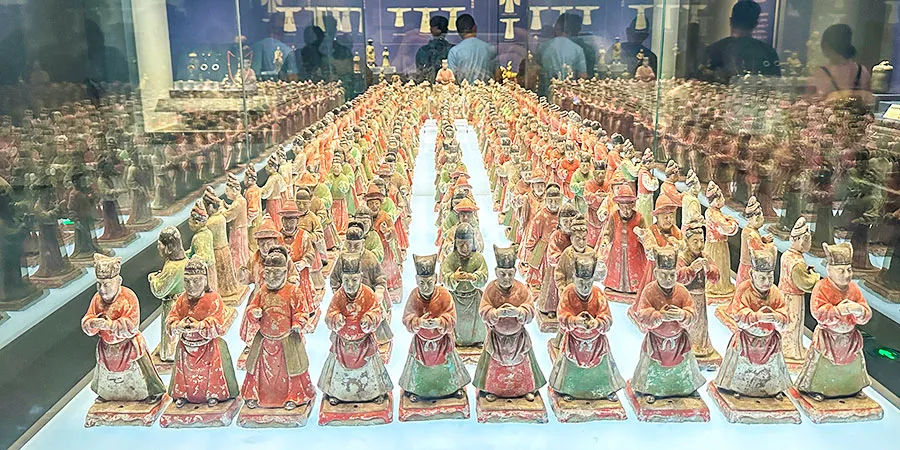 |
| Painted Pottery Honor Guards |
The group of painted and glazed escort figurines consists of over 300 pieces, representing an escort formation for a procession. Just like the role of the Terracotta Army figures, these are ancient pottery figures used for burial purposes. However, compared to the faded and oxidized Terracotta Army figures, this group of honor guards are dressed in red and green clothes and still shine brightly to this day. Unlike the Terracotta Army figures which have individual faces, these figures have many of the same faces, indicating that there were already unique technical standards for making human faces at that time. Each of them has different postures, and even some of their postures are a bit strange. In fact, this is because each of them originally held various items representing their identities, such as various flags, musical instruments, lanterns, moon-shaped fans, etc., but these wooden items have all rotted over time.
 Photos of Relics in Shaanxi after the Tang Dynasty
Photos of Relics in Shaanxi after the Tang DynastyGo to the Exhibition Hall for Treasures of Great Tang Dynasty
- Last updated on Dec. 25, 2025 by Sherry Xia -
 Photos of Relics of Sui & Tang Dynasties
Photos of Relics of Sui & Tang Dynasties Photos of Relics in Shaanxi after the Tang Dynasty
Photos of Relics in Shaanxi after the Tang Dynasty










